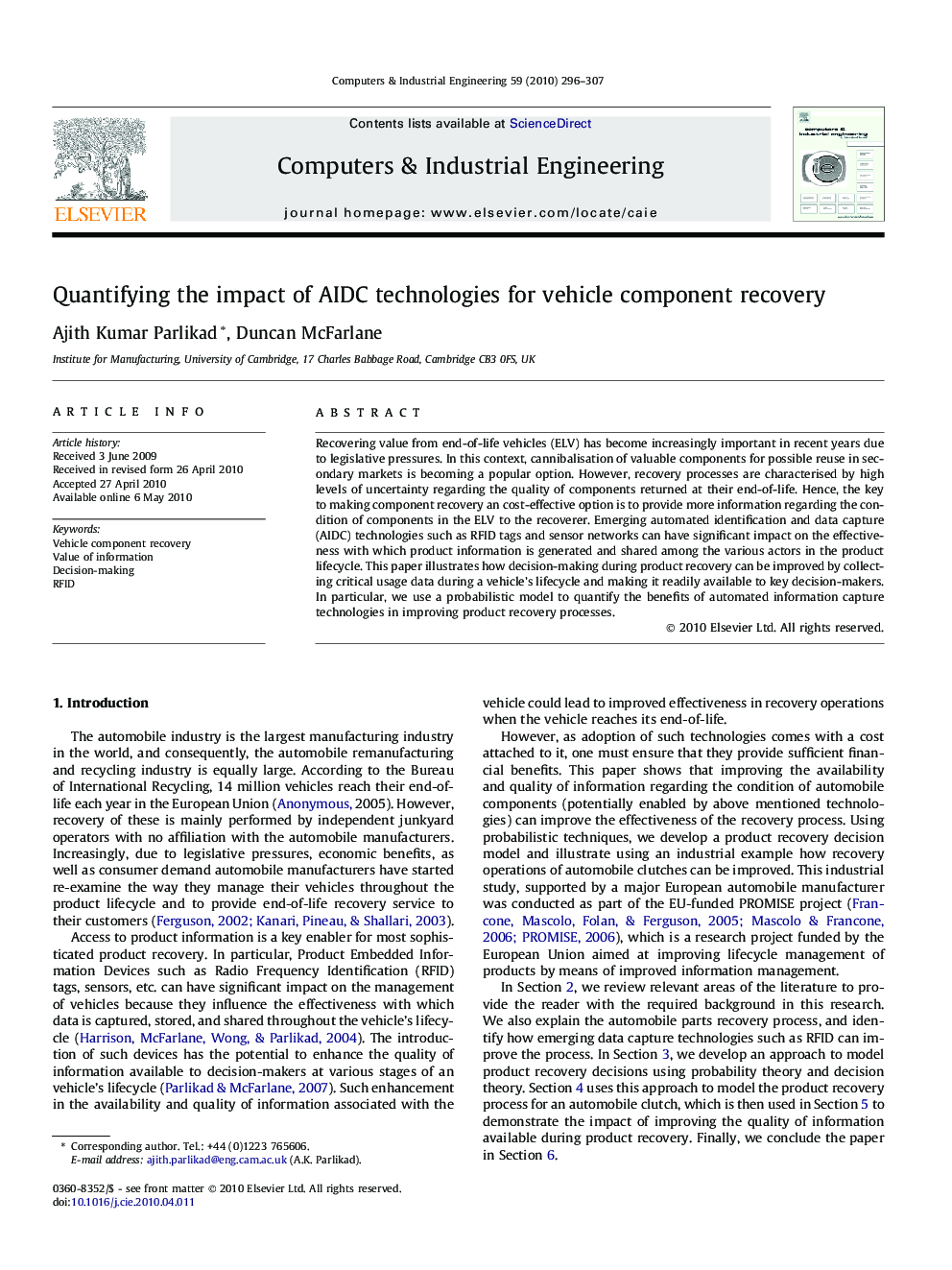| Article ID | Journal | Published Year | Pages | File Type |
|---|---|---|---|---|
| 1135078 | Computers & Industrial Engineering | 2010 | 12 Pages |
Recovering value from end-of-life vehicles (ELV) has become increasingly important in recent years due to legislative pressures. In this context, cannibalisation of valuable components for possible reuse in secondary markets is becoming a popular option. However, recovery processes are characterised by high levels of uncertainty regarding the quality of components returned at their end-of-life. Hence, the key to making component recovery an cost-effective option is to provide more information regarding the condition of components in the ELV to the recoverer. Emerging automated identification and data capture (AIDC) technologies such as RFID tags and sensor networks can have significant impact on the effectiveness with which product information is generated and shared among the various actors in the product lifecycle. This paper illustrates how decision-making during product recovery can be improved by collecting critical usage data during a vehicle’s lifecycle and making it readily available to key decision-makers. In particular, we use a probabilistic model to quantify the benefits of automated information capture technologies in improving product recovery processes.
